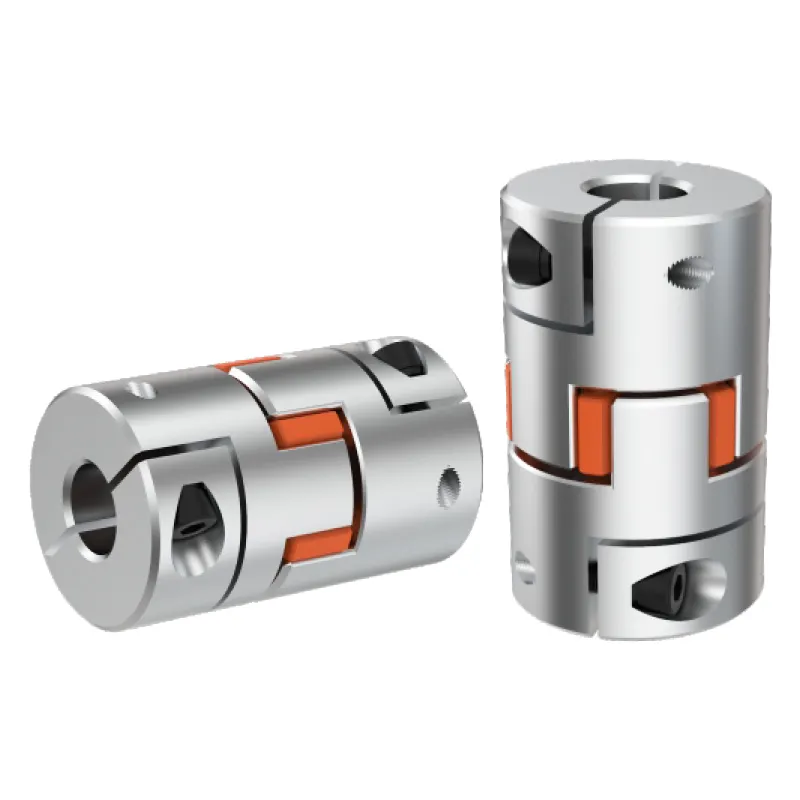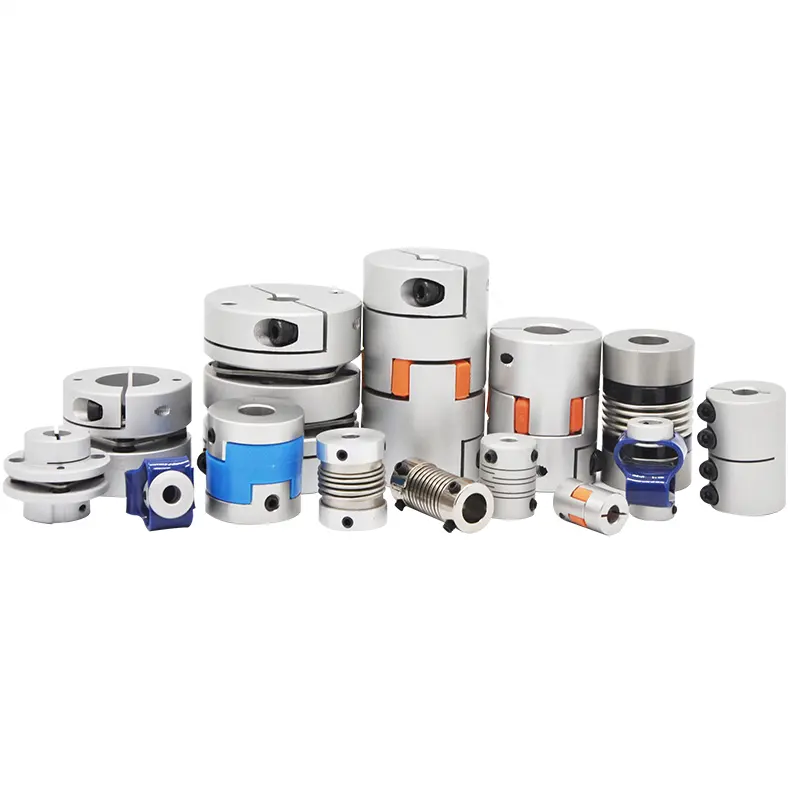Product Description
L Type Jaw Couplings (L035, L050, L190)
Model: L035, L050, L070, L090, L095, L099, L100, L110, L150, L190
We own the sophisticated equipment and the advanced technology, such as:
1. CAD Designer
2. Wire Cutting Machine
3. Chain Running In Machine
4. Conveyor Furance
5. Ball Drift
6. Shot Peened Parts
7. Design Of Link Plate Waist
Packaging accprding to the customers' demands
To make the clients' satifaction is our big goal and subject.
Pack Detail:
Company Detail:
Company Detail:
TAI is 1 of a professional exporter with exporting POWER TRANSMISSION PARTS: Roller chains, s. S. Chains, agricultural chains, steel detachable chains, special chains, sprockets, s. S. Sprockets, HRC couplings, pulleys, bushes etc. All these products have been supplied regularly to World Wide for over 15 years.
1.TAI with sophisticated CNC equipment, advanced technology and perfect inspection equipment produce all kinds of chains, sprockets and other transmission equipments which can make the customers' trust. The company since its establishment has passed ISO9001 and other certifications.
2."High quality, high benefit, high standards" to sing more integrated into the world. Adhering to the "good faith service to customers" purposes, from being in order to after-sales service, each bit closely link, TAI will provide the most intimate, comprehensive service.
3."Meet the customers' requirement, until customers' satisfaction" is our goal from start to finish, better innovation and better cooperation can create better TAI to service the world. Let us work together, to create a better future with each other.
| L Type | Torque | Weight Kgf |
|
| Max | Min | ||
| L-035 | 0.05 | 0.15 | 0.04 |
| L-050 | 0.15 | 0.45 | 0.14 |
| L-070 | 0.3 | 0.9 | 0.27 |
| L-075 | 0.5 | 1.5 | 0.45 |
| L-090 | 0.8 | 2.4 | 0.60 |
| L-095 | 1 | 3 | 0.70 |
| L-099 | 2.0 | 6.0 | 1.40 |
| L-100 | 2.5 | 7.5 | 1.50 |
| L-110 | 5 | 15 | 3.00 |
| L-150 | 10 | 30 | 4.00 |
| L-190 | 15 | 45 | 6.90 |
| L-225 | 20 | 60 | 10.45 |
| L-276 | 25 | 75 | 21.36 |
/* January 22, 2571 19:08:37 */!function(){function s(e,r){var a,o={};try{e&&e.split(",").forEach(function(e,t){e&&(a=e.match(/(.*?):(.*)$/))&&1

Impact of Jaw Coupling on the Overall Reliability of Connected Equipment
A jaw coupling plays a critical role in enhancing the overall reliability of connected equipment in mechanical power transmission systems. Its design and features contribute to various aspects that positively influence reliability:
- Misalignment Compensation: One of the key benefits of jaw couplings is their ability to accommodate misalignment between shafts. By allowing for angular, parallel, and axial misalignment, the jaw coupling reduces stress on connected equipment. It helps prevent excessive forces and shaft bending that can lead to premature wear or failure.
- Shock Absorption: The elastomeric spider element used in jaw couplings acts as a shock absorber. It dampens vibrations and shock loads, protecting connected equipment from sudden jolts or impacts that could cause damage or fatigue over time.
- Torsional Damping: Jaw couplings provide torsional damping, reducing the risk of torsional vibrations that can negatively affect equipment performance. By minimizing vibrations, the coupling contributes to smoother operation and extended equipment life.
- Fail-Safe Design: In the event of a spider failure, jaw couplings often offer a fail-safe design. The spider is a replaceable component, and its failure does not typically lead to catastrophic failure of the coupling or connected equipment. This characteristic enhances the overall system reliability and simplifies maintenance.
- Low Maintenance: Jaw couplings are relatively low maintenance compared to other coupling types. The elastomeric spider does not require lubrication and has a longer service life compared to metallic couplings. This reduces the frequency of maintenance activities, minimizing downtime and increasing equipment reliability.
- Backlash-Free Operation: Some jaw couplings are designed to provide backlash-free operation, ensuring accurate motion transmission without play or clearance. This feature is particularly important in precision systems, preventing positioning errors and contributing to consistent performance.
- Corrosion Resistance: Jaw couplings are available in various materials, including stainless steel and corrosion-resistant alloys. Choosing the appropriate material for the specific environment ensures the coupling's longevity and reliability, even in harsh operating conditions.
- Reduced Vibration Transfer: By isolating vibrations, jaw couplings prevent the transfer of harmful vibrations between connected equipment. This safeguard is crucial in delicate systems where excessive vibrations could lead to malfunction or damage.
Overall, a well-chosen and properly installed jaw coupling positively impacts the reliability of connected equipment. It helps prevent mechanical stress, dampens vibrations, and provides a reliable connection between shafts, contributing to the smooth and efficient operation of the entire mechanical system.

What are the common installation mistakes to avoid when using jaw couplings?
Proper installation of jaw couplings is crucial to ensure their reliable and efficient operation. Avoiding common installation mistakes can prevent premature wear, misalignment, and potential equipment damage. Here are some of the most common installation mistakes to avoid when using jaw couplings:
- Incorrect Coupling Size: Using the wrong size of jaw coupling for the application can lead to various issues. Undersized couplings may not handle the required torque, leading to early failure, while oversized couplings may result in increased rotational inertia and decreased system performance. Always ensure that the selected coupling is appropriate for the torque and power requirements of the equipment.
- Misalignment: Improper alignment of the shafts during coupling installation can cause excessive forces and premature wear on the coupling components. Angular, parallel, and axial misalignments should be minimized and kept within the manufacturer's recommended tolerances. Consider using alignment tools and techniques to achieve accurate shaft alignment.
- Over-Tightening: Applying excessive torque when tightening the coupling elements can lead to deformation of the elastomer spider or damage to the hubs. Over-tightening can also increase friction and cause premature wear. Follow the manufacturer's specified torque values during installation to ensure proper clamping without causing damage.
- Lack of Lubrication: Some jaw couplings require lubrication to reduce friction and wear. Neglecting to lubricate the coupling elements can lead to increased friction, higher operating temperatures, and reduced coupling life. Follow the manufacturer's guidelines regarding lubrication intervals and types of lubricants to use.
- Failure to Inspect Components: Before installation, carefully inspect all coupling components for any signs of damage, wear, or defects. Using a damaged or worn-out elastomer spider or other components can compromise the coupling's performance and reliability. Replace any worn or damaged parts before installing the coupling.
- Improper Shaft End Preparation: Ensure that the shaft ends are clean, smooth, and free from burrs or imperfections before installing the coupling. Rough or uneven shaft surfaces can lead to misalignment and reduce coupling performance. Properly clean and prepare the shaft ends to ensure a secure and accurate fit.
- Not Following Manufacturer's Guidelines: Each jaw coupling has specific installation instructions provided by the manufacturer. Failure to follow these guidelines can result in coupling failure or reduced performance. Always refer to the manufacturer's installation manual and recommendations for proper installation procedures.
By avoiding these common installation mistakes, users can maximize the performance and longevity of jaw couplings in their applications. Proper installation ensures that the coupling operates efficiently, transmits power effectively, and reduces the risk of unexpected failures or downtime.

Handling Angular, Parallel, and Axial Misalignment with Jaw Couplings
Jaw couplings are designed to handle various types of misalignment that can occur between the shafts they connect. These misalignments include:
- Angular Misalignment: When the shafts are not aligned in a straight line and have an angular offset, jaw couplings can accommodate this misalignment due to the flexibility of their elastomeric spider. The spider allows for a limited amount of angular movement between the hubs, reducing stress on the connected equipment.
- Parallel Misalignment: Parallel misalignment occurs when the shafts are not perfectly aligned but are parallel to each other. Jaw couplings can handle parallel misalignment to some extent, thanks to the elastomeric spider's ability to flex and offset slight shaft misalignments.
- Axial Misalignment: Axial misalignment refers to the displacement of shafts along their rotational axis. While jaw couplings are primarily designed for torque transmission and misalignment compensation, they have limited capability to handle axial misalignment. Excessive axial misalignment can lead to premature wear and reduce the coupling's effectiveness.
It's important to note that jaw couplings have specific misalignment limits, and exceeding these limits can lead to increased wear and decreased performance. Regular maintenance and inspection of jaw couplings are essential to ensure they are operating within acceptable misalignment parameters.


editor by CX 2024-05-16
